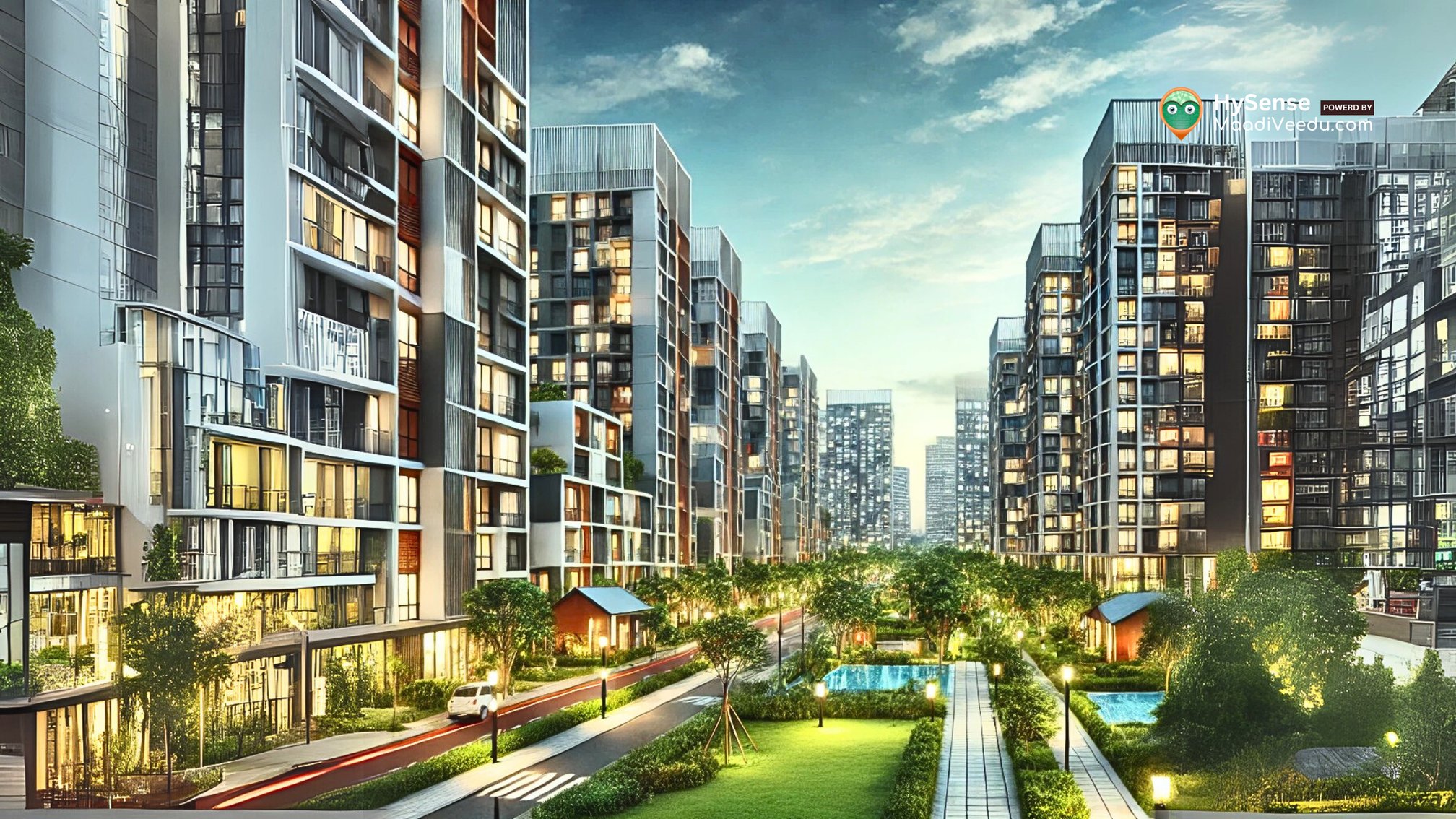Government Initiatives for Mixed-Income Housing – Policies, Benefits & Social Impact
Learn how government policies like inclusionary zoning, tax benefits, and rental assistance promote mixed-income housing, ensuring social integration, economic growth, and urban development.

Table of Contents
Mixed-income housing is a vital approach to creating inclusive and sustainable communities. Governments worldwide implement various initiatives to encourage a blend of different income groups within the same residential areas. This not only improves access to quality housing but also enhances social integration, reducing economic disparities and fostering community harmony. But how exactly do government initiatives promote mixed-income housing? Let's explore in simple terms.
What Is Mixed-Income Housing?
Mixed-income housing refers to residential developments where people from different income levels—low, middle, and high—live together. These communities typically include both affordable and market-rate housing, ensuring that individuals from diverse economic backgrounds share the same neighborhoods, amenities, and opportunities.
Unlike traditional affordable housing, which often clusters low-income households in specific areas, mixed-income housing promotes diversity in housing projects. This approach helps reduce social isolation, providing equal access to better schools, healthcare, and job opportunities.
Key Government Initiatives That Promote Mixed-Income Housing
Governments use various strategies to encourage mixed-income housing projects. These policies not only provide affordable housing but also contribute to better urban planning and social equality.
1. Inclusionary Zoning Policies
- Governments enforce laws that require new housing developments to allocate a portion of units for low- and moderate-income families.
- Builders receive incentives like tax benefits or additional construction rights in return.
- This ensures that affordable housing is integrated into well-developed neighborhoods rather than being segregated.
- Example: Many cities have implemented mandatory inclusionary zoning laws, requiring developers to include at least 10-20% affordable units in every new housing project.
2. Public-Private Partnerships (PPPs)
- Governments collaborate with private developers to create mixed-income communities.
- Financial assistance, reduced land costs, or tax exemptions encourage builders to include affordable units in their projects.
- This approach promotes large-scale housing developments that cater to diverse income groups.
- Example: In many countries, private companies work with the government to build mixed-income communities where high-income residents subsidize lower-income tenants, making it financially sustainable.
3. Tax Credits and Subsidies
- Programs like Low-Income Housing Tax Credits (LIHTC) provide financial incentives to developers who build mixed-income housing.
- Subsidies help lower construction costs, ensuring affordability for low-income families.
- Such schemes make it profitable for private builders to invest in inclusive communities.
- Example: Many developers receive tax breaks for every affordable unit they add to a housing project, ensuring a balance between profit-making and social responsibility.
4. Redevelopment of Public Housing
- Many governments redevelop older public housing areas into modern mixed-income communities.
- Instead of concentrating low-income families in one area, they integrate them with middle- and high-income residents.
- This improves infrastructure, enhances safety, and promotes social cohesion.
- Example: Several urban renewal projects involve demolishing old, overcrowded public housing units and replacing them with mixed-income apartments, parks, and better amenities.
5. Rent Assistance Programs
- Governments provide rental vouchers or subsidies to low-income families to afford housing in better neighborhoods.
- This helps in reducing ghettoization and ensures a more balanced community structure.
- Families get access to improved education, healthcare, and employment opportunities.
- Example: Housing vouchers allow lower-income families to rent homes in high-income areas where they might not afford to live otherwise.
6. Land Use Regulations and Affordable Housing Funds
- Certain policies allow government-owned land to be used for mixed-income housing developments.
- Governments create housing funds that support the construction of affordable homes in well-developed areas.
- These initiatives prevent the concentration of poverty and promote diversity.
- Example: Government-backed housing funds provide loans and financial support to projects that incorporate both affordable and market-rate housing.
7. Smart City Development and Urban Planning
- Governments integrate mixed-income housing into smart city projects to ensure sustainable urban development.
- These projects focus on creating inclusive communities with proper infrastructure, green spaces, and easy access to public transportation.
- Example: Many smart city initiatives worldwide include policies that promote a mix of affordable and luxury housing.
8. Government-Backed Loans and Financing Options
- Governments provide low-interest loans to developers willing to build mixed-income housing.
- Special mortgage programs make it easier for middle- and low-income families to buy homes in mixed communities.
- Example: Many countries offer first-time homebuyer programs that support mixed-income housing projects.
How Mixed-Income Housing Benefits Society
Government-supported mixed-income housing initiatives offer numerous benefits:
- Encourages Social Integration: Brings people from different backgrounds together, reducing income-based discrimination.
- Improves Economic Mobility: Low-income families get access to better schools, healthcare, and job opportunities.
- Enhances Safety and Infrastructure: Mixed-income neighborhoods generally have better security and facilities.
- Reduces Economic Segregation: Prevents the formation of isolated low-income communities and promotes balanced urban growth.
- Boosts Local Economy: Higher-income residents contribute to increased business opportunities and better infrastructure in mixed-income areas.
- Reduces Crime Rates: Studies suggest that integrated communities experience lower crime rates compared to isolated low-income housing projects.
Challenges in Implementing Mixed-Income Housing
Despite its benefits, mixed-income housing faces certain challenges:
- High Land and Construction Costs: Developers may hesitate due to lower profit margins.
- Community Resistance: Some residents oppose affordable housing in their areas, fearing reduced property values.
- Policy Implementation Issues: Lack of proper regulations and monitoring can limit the effectiveness of government initiatives.
- Financial Sustainability: Some mixed-income housing projects struggle to maintain long-term financial stability without continuous government support.
Solutions to Overcome These Challenges
Governments and developers can take specific steps to ensure successful implementation of mixed-income housing:
- Increase Government Funding: More investments in affordable housing funds can encourage sustainable development.
- Educate Communities: Public awareness campaigns can help reduce resistance from high-income residents.
- Streamline Approval Processes: Reducing bureaucratic delays will attract more private developers to invest in mixed-income housing.
- Encourage Long-Term Affordability: Implement policies to ensure that affordable housing remains accessible to lower-income families for decades.
Conclusion
Mixed-income housing is a powerful tool for fostering social integration and reducing economic disparities. Government initiatives like inclusionary zoning, tax incentives, and rental assistance play a crucial role in making these developments successful. While challenges exist, well-structured policies and community participation can ensure that mixed-income housing becomes a sustainable solution for inclusive urban development.
Looking for More Insights?
For more informative real estate blogs, visit blog.maadiveedu.com. If you are searching for the perfect property, explore listings on MaadiVeedu.com.











